Environmental Engineering Reference
In-Depth Information
10000
Allowable amplitude
of vertical vibration
5000
2000
1000
500
200
100
0.005
0.0005
0.1
0.05
0.02
0.01
0.002
0.001
0.0002
0.0001
Amplitude of vibration =
A
max
(in.)
FIGURE 4.12
Scale of vibration damage to structures and limits of human perception. (From Richart, F.E., Jr.,
Proc. ASCE J.
Soil Mech. and Found. Eng. Div
., 86, 1960. With permission.)
Lateral Displacements
Slopes, retaining structures, pile foundations, soft ground beneath embankment loads,
and faults all undergo lateral deformations. Earth pressures against retaining walls cause
tilting or other wall deflections. Slope failures often occur along a zone or surface, result-
ing in lateral displacements. Surface loads can cause lateral displacement of buried, weak
soil strata. Foundation piles deflect laterally during load tests and while in service.
Strain Gradients
Differential deflection of earth dam embankments and reinforced earth walls, the closure
of excavations in rock masses, and the imposition of high loads in rock masses result in
strain gradients.
Internal Erosion
Seepage forces through, around, or beneath earth embankments or beneath or around con-
crete dams or cofferdams cause internal erosion.
Summary
The monitoring methods are summarized in terms of the type of ground movement and
its occurrence in
Table 4.6.
4.3.2
Vertical Displacement
Borehole Extensometers
Various types of borehole extensometers are available to provide settlement profiles. They
are commonly based on lowering a probe down the borehole that can contain flush-coupled


